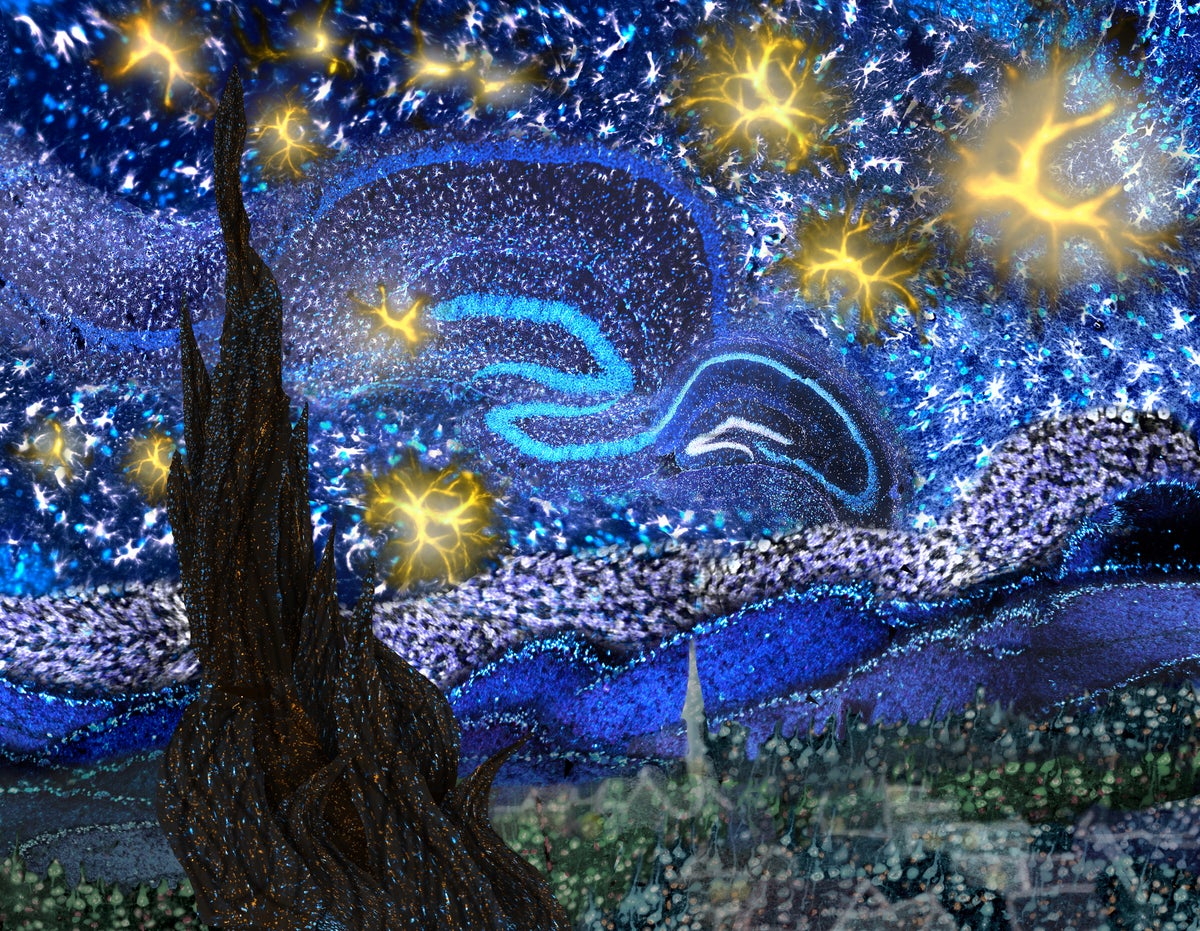Week 7: Neuroscience + Art
Samuels, Fionna M. D., and Liz Tormes. “See the Top Entries in the Art of Neuroscience Competition.” Scientific American, 20 Feb. 2024, www.scientificamerican.com/article/see-the-top-entries-in-the-art-of-neuroscience-competition1/.
[Left Image] Hunt, Katie. “A Woman Took 550 Times the Usual Dose of LSD, with Surprisingly Positive Consequences.” CNN, Cable NewsNetwork, 1 Mar. 2020, www.cnn.com/2020/02/27/health/lsd-overdoses-case-studies-wellness/index.html.
[Right Image] “Claude Monet: Bridge over a Pond of Water Lilies.” The Metropolitan Museum of Art, 1 Jan. 1899, www.metmuseum.org/art/collection/search/437127.
I started to think more about individual perception of the world, and how artists use their brains to create different art. Robert Pepperell makes a great point about perception, specifically through the artist Claude Monet, who he says tried to “faithfully depict the appearance of the world, in other words what he saw rather than what he knew.” It is interesting how one’s perception differs, whether under the influence of drugs or not, and how this correlates with the brain in its function to produce or see art. While Hofmann was not producing art like Monet, he experienced it through his visuals and the distortion.
Sommer, Valerie. “‘Octopus Brainstorming.’” UCLA, UCLA, 14 Nov. 2017, newsroom.ucla.edu/stories/octopus-brainstorming.
When thinking about the brain, as an organ, you come to realize how unique it actually is. Giovanni Frazzetto and Suzanne Anker, in their article “Neuroculture,” explain that “being” rather than “having” a brain makes us human. When looking through this lens, the brain is irreplaceable as it gives us our humanity and our “personhood” as Farzzetto and Anker describe. It is interesting how we can not truly see how others perceive the world as we do. Which is why Victoria Vesna’s “Octopus Brainstorming” sheds light on the ability for humans to try and visualize the “experience of other sentient beings.” It is through experiences of visuals, experiments, or even drugs that help us understand the experiences of the self and others, in relation to neuroscience and art.
Works Cited
Albu, Cristina. “Planetary Re-Enchantment: Human-Animal Entanglements in Victoria Vesna’s Octopus
Brainstorming.” CMA Journal - Simon Fraser University, www.sfu.ca/cmajournal/issues/issue-ten--enchantment--disenchantment--reenchantment/cristina-albu.html?fbclid=IwAR1twyrqbeKqNrJSUXSihLVGvX_D9ARndxDv3USnw2pTENE_iXHJtIo8v54https%3A%2F%2Fwww.artsy.net%2Farticle%2Fartsy-editorial-psychedelics-offer-artists-creative-boost. Accessed 14 May 2024.
Cortés, Michelle Santiago. “Psychedelics May Offer Artists a Creative Boost.” Artsy, 21 December 2018.
Frazzetto, Giovanni and Anker, Suzanne. “Neuroculture.” Macmillan Publishers Limited. November 2009.
Accessed 14 May 2024
Pepperell, Robert. “Connecting Art and The Brain: An Artist’s Perspective on Visual Indeterminacy.”
Frontiers, Frontiers, 17 Aug. 2011, www.frontiersin.org/articles/10.3389/fnhum.2011.00084/full. Accessed 14 May 2024.
Vesna, Victoria. “Neuroscience PT3.” YouTube, YouTube, 16 May 2012, www.youtube.com/watch?
v=E5EX75xoBJ0&t=208s. Accessed 14 May 2024.



Comments
Post a Comment